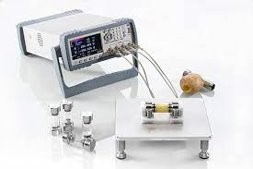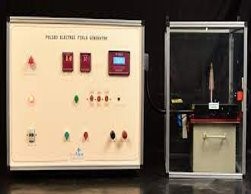Introduction
- Pulsed electric field (PEF) processing is an efficient non-thermal food processing technique using short, high voltage pulses. These pulses induce poration of plant, animal and microbial cells, leading to cell disintegration and microbial inactivation.
- PEF processing is thought to be more environmentally friendly than conventional thermal food processing. Due of its immediate effects, such as lessening energy and water depletion, PEF technology has been considered a sustainable choice.
- Depending on the targeted meal and the application, the electroporation occurs once the biological cells are exposed to the applied voltage and the accompanying electric field over the necessary critical transmembrane
Liquid Food Preservation

- Liquid plant juices, liquid white egg (LWE), and milk have nutrients that support microbiological growth and eventually suffer fast deterioration of their safety. In comparison to the conventional thermal and other non-thermal pasteurization systems, PEF can be inserted into existing continuously processing lines; also, ensures the juice’s microbial stability with lesser treatment temperature and minimum adverse effects
- Timmermans et al. (2019) observed the microbial inactivation with two treatment protocols and reported that (2.7 kV cm− 1 , 1000 μs) was more effective than (10 kV cm− 1 , 2 μs). These results confirm that wider PEF treatment pulses are more effective than higher pulsed strength with shorter pulse width. However, localized thermal effect and electrolysis restricted pulse width to microseconds.
Solid Food Preservation
- Pulsed electric field technology has shown various solid food applications
- PEF dehydration has been investigated in plant tissues (Chauhan, Shayanfar, & Toepfl, 2019; Yu, Jin, Fan, & Wu, 2018). PEF (5 kV cm− 1,8 kJ kg− 1) pre-treated carrot showed a reduced drying time than untreated samples (Liu, Pirozzi, Ferrari, Vorobiev, & Grimi, 2019; Wiktor et al., 2016).
- Pretreatment of apples with low PEF (800 V cm− 1 ) facilitated preserving the product’s shape and reduced 57% drying time (Lammerskitten et al., 2019).
- The above information collectively indicates that PEF treatment has a beneficial effect

Application in food products research paper
Milk
- Calderon-Miranda (1998) studied the PEF inactivation of Listeria innocua suspended in skim milk and its subsequent sensitization to nisin. The microbial population of L. innocua was reduced by 2.5-log after PEF treatments at 30, 40 or 50 kV/cm. The same PEF intensities and subsequent exposure to 10 IU nisin/ml achieved 2-, 2.7- or 3.4-log reduction cycles of L. innocua. It appears that there may be an additional inactivation effect
as a result of exposure to nisin after PEF
Eggs
- Other studies on liquid whole eggs (LWE) treated with PEF conducted by Qin and others (1995) and Ma and others (1997) showed that PEF treatment decreased the viscosity but increased the color (in terms of b -carotene concentration) of liquid whole eggs compared to fresh eggs. After sensory panel evaluation with a triangle test, Qin and others (1995b) found no differences between scrambled eggs prepared from fresh eggs and electric field-treated eggs; the latter were preferred over a commercial brand.
Meat
- A study by YingZhang and group evaluate the effects of pulsed electric field (PEF) pretreatment on mass transfer, microstructure and eating quality of beef during marination process. Results showed that PEF could achieve a good effect of promoting marination with a small energy input (0.78–12.50 kJ/kg).
Juice
- The effect of pulsed electric field (PEF) on inactivation of yeast Saccharomyces cerevisiae (S.cerevisiae) in apple juice containing different sugar concentration was studied. Pulse numbers less than 20 pulses (at 12.6kV/cm) had no or veryless effect on yeast inactivation. Increasing the pulse number up to 400 pulses resulted about 3 logs yeast inactivation.
References
- Eshtiaghi, M.N. & Nakthong, N. 2021. Application of pulsed electric field for inactivation of Yeast S. cerevisiae in apple juice. In: Journal of Physics: Conference Series. 2021, IOP Publishing, pp. 12008.
- Soliva-Fortuny, R., Balasa, A., Knorr, D., & Martín-Belloso, O. (2009). Effects of pulsed electric fields on bioactive compounds in foods: a review. Trends in Food Science & Technology, 20(11-12), 544–556. doi:10.1016/j.tifs.2009.07.003
- Kumar, S., Agarwal, N. & Raghav, P.K. 2016. Pulsed electric field processing of foods-a review. International Journal of Engineering Research and Modern Education. (1)1,. pp. 111–1118.





